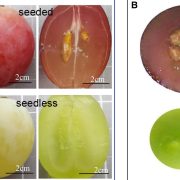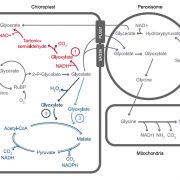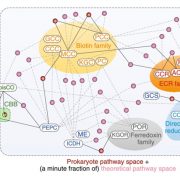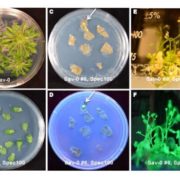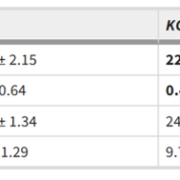Colour bio-factories: Towards scale-up production of anthocyanins in plant cell cultures (Metabolic Engineering)
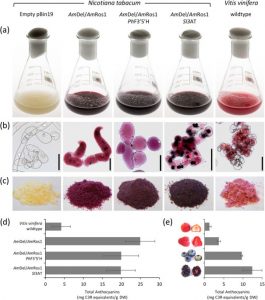 Anthocyanins are common plant pigments that provide dietary benefits, leading to an increase in their use as food coloring agents. However, purifying anthocyanins from current plant sources (such as waste grape skins, red cabbage, and berries) is expensive and creates a variable product. Modifying biosynthetic and regulatory genes of anthocyanins can drastically increase anthocyanin production in plants. Appelhagen and colleagues used tobacco (Nicotiana tabacum) cell lines to produce high levels of different anthocyanins. These tobacco cell lines stably produce anthocyanins and the production can be scaled up in fermenters. They also show how this system can be moved into other plant species, such as Arabidopsis.
Anthocyanins are common plant pigments that provide dietary benefits, leading to an increase in their use as food coloring agents. However, purifying anthocyanins from current plant sources (such as waste grape skins, red cabbage, and berries) is expensive and creates a variable product. Modifying biosynthetic and regulatory genes of anthocyanins can drastically increase anthocyanin production in plants. Appelhagen and colleagues used tobacco (Nicotiana tabacum) cell lines to produce high levels of different anthocyanins. These tobacco cell lines stably produce anthocyanins and the production can be scaled up in fermenters. They also show how this system can be moved into other plant species, such as Arabidopsis.
Our Facebook post of this publication reached 21,638 people and had over 2,150 engagements, 128 shares in June 2018. (This summary by Julia Miller was originally included in the July 27th edition of “What We’re Reading” https://doi.org/10.1016/j.ymben.2018.06.004)


